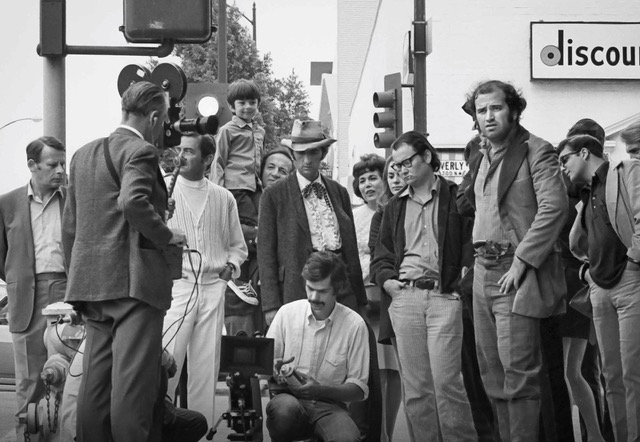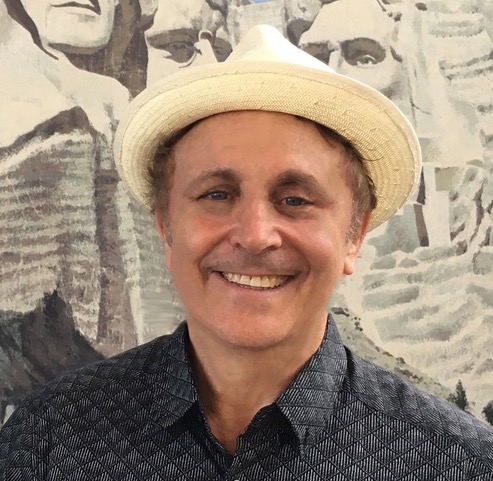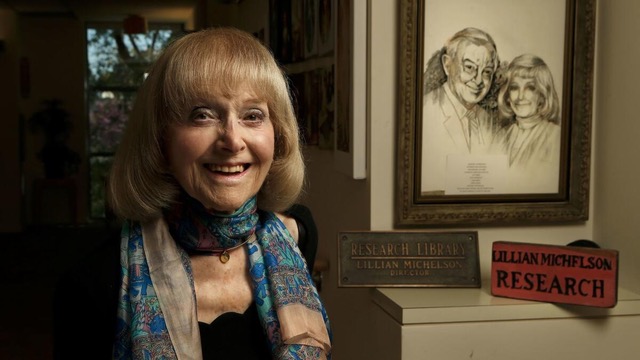Maybe it’s the researcher in me, but I’m fascinated with the notion of dumpster diving into Hollywood history. Beyond inferring a quest to retell a particular moment or chapter in cinema history, it can also address the rather egregious practice manifestly found in Hollywood of simply tossing-out historical documentation and records of what actually transpired. (The most recent example: Technicolor tossing their original corporate minutes from 1915.) On the other hand, there are those intrepid souls willing to get their hands dirty by literally climbing into a dumpster to save those artifacts of Hollywood history for future generations.

One such individual is my old friend Marc Wanamaker who created the Bison Archive in the early 1970s. I’ve known Marc most of my life. We both attended Emerson Junior High School then University High School in the first half of the 1960s. We both attended Cal State Northridge, but I don’t recollect ever seeing Marc there during my 3 years. I spent most of my free time in the basement of the chemistry building processing black and white negatives or making prints for the various courses in photography I was quite passionate about.

Where Marc and I reconnected was at The American Film Institute at Greystone in Beverly Hills…the Los Angeles home of the AFI Conservatory during the 1970s. In 1970, I was accepted into a work-study program – my job was recording audio interviews with many of the filmmakers who were the focus of seminars regularly conducted at the Institute. Marc, on the other hand, was part of the group of archivists at Greystone helping build the AFI Library then being put together by Anne Schlosser. I spent a lot of time in the library trying to catch up on the literature of cinema being assembled by Anne, Marc, Gary Essert, I believe, David Shepard, and others. Down the hall from the library, Marc was assembling the materials he saved for posterity by diving in dumpsters on the Columbia Pictures lot, at Sunset and Gower, before the studio finally relocated to the north end of the Warner Bros lot in Burbank – that became the Burbank Studios until Warner Bros got it back upon Columbia’s move to Culver City after Sony bought the old MGM lot from Lorimar Pictures.
Should you think that Marc quixotic career dumpster diving was outside the norm, he recently recounted a wonderful story to me. It was in 1971, if memory serves, and Marc was reclaiming materials from a dumpster the Columbia Pictures marketing department was using, when he became aware that there was another intrepid “researcher” in an adjacent dumpster – director Peter Bogdanovich who was diving for extant materials from the legendary career of his close friend, director Orson Welles who made The Lady from Shanghai at the studio.

Preservation was a major focus of AFI‘s at that moment, and Institute director, George Stevens Jr. allotted space for the library, Marc’s nascent Bison Archive, and also space in the basement where Lillian Michelson, arguably the most famous cinema researcher in America at that time, had been given space to house her research library after having been forced to relocate from a prior location. I remember quite fondly an almost magical pull on me emanating from Lillian’s archive in the Greystone basement. And later, it certainly informed my first jobs in Hollywood …doing research for David Wolper Productions.
AFI in those days was a bastion for cinema scholarship. James Silke and Jim Kitses were leading the Critical Studies department. Paul Schrader was arguably the most prominent fellow in the department but there were a number of other noteworthy cinema scholars in the fellowship program. They included future screenwriter Robert Mundy; future UCLA Cinema Studies professor Steven Mamber; and author Donald Knox who was working on his masterwork, The Magic Factory: How MGM Made an American in Paris.
It’s certainly not lost on me that that period in my budding career informed the years of research I put into Alchemy in Technicolor – a copy of which now resides in the AFI Library in Hollywood.